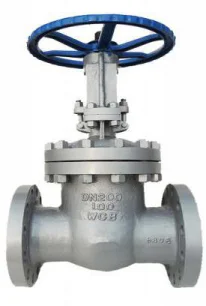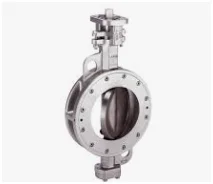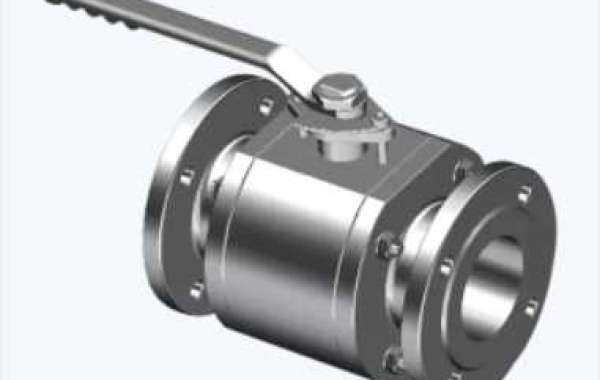Today, this article will lead you to explore the advantages and disadvantages of gate valves, butterfly valves and ball valves. Through comparison, you will have a clearer understanding of the above three types of valves. Interested partners will go and have a look.
1. Advantages and disadvantages of gate valve
Gate valve (Gate valve working principle and movement mode) refers to the valve whose closing member (gate) moves along the vertical direction of the channel axis, and is mainly used to cut off the medium on the pipeline, that is, fully open or fully closed. In general, gate valves cannot be used to regulate flow. It can be applied to low-temperature pressure or high temperature and high pressure and can be used according to different materials of the valve. However, gate valves are generally not used in pipelines that transport mud and other media.
Gate valve advantages:
①The fluid resistance is small;
②The torque required for opening and closing is small;
③It can be used on the ring network pipeline where the medium flows in two directions, that is to say, the flow direction of the gate valve medium is not restricted;

④When fully open, the sealing surface of the gate valve is less eroded by the working medium than the globe valve;
⑤ The shape and structure are relatively simple, and the manufacturing process of the gate valve is better;
⑥The length of the gate valve structure is relatively short.
Disadvantages of gate valve:
①The external dimension and opening height are large, and the installation space required for the gate valve is also large;
②In the process of opening and closing the gate valve, the sealing surface is relatively rubbed, and the friction loss is relatively large, and even at high temperature, it is easy to cause scratches;
③General gate valves have two sealing surfaces, which adds some difficulties to processing, grinding and maintenance;
④The opening and closing time is long.
2. Advantages and disadvantages of a butterfly valve
A butterfly valve (What is a butterfly valve?) is a valve that uses a disc-type opening and closing member to reciprocate and rotate about 90° to open, close, and adjust the fluid channel.
Butterfly valve advantages:
①Simple structure, small size, lightweight, and fewer consumables, do not use it in large-diameter valves;
②The opening and closing are rapid, and the flow resistance of the butterfly valve is small;
③It can be used for medium with suspended solid particles, and can also be used for powdery and granular media according to the strength of the sealing surface of the butterfly valve. It can be used for two-way opening and closing and adjustment of ventilation and dust removal pipelines. Butterfly valves are widely used in gas pipelines and waterways in metallurgy, light industry, electric power, and petrochemical systems.

Disadvantages of butterfly valve:
①The flow adjustment range is not large. When the opening reaches 30%, the flow rate of the butterfly valve is nearly 95% or more;
②Due to the limitation of the structure and sealing material of the butterfly valve, it is not suitable to be used in high-temperature and high-pressure pipeline systems. The general working temperature is below 300℃ and below PN40;
③The sealing performance of the butterfly valve is poorer than that of the ball valve and globe valve, so it is used in places where sealing requirements are not very high.
3. Advantages and disadvantages of ball valve
Ball Valves (Getting Started with Ball Valves) evolved from plug valves. Its opening and closing part is a sphere, and the sphere is rotated 90° around the axis of the valve stem to achieve the purpose of opening and closing. The ball valve is mainly used to cut off, distribute and change the flow direction of the medium on the pipeline. The ball valve designed with a V-shaped opening also has a good flow adjustment function.
Advantages of ball valve:

①Has the lowest flow resistance (the actual flow resistance of the ball valve is 0);
②Because it will not get stuck during work (when there is no lubricant), the ball valve can be reliably used in corrosive media and low-boiling liquids;
③In a wide range of pressure and temperature, the ball valve can achieve complete sealing;
④The ball valve can be opened and closed quickly, and the opening and closing time of some structures is only 0.05~0.1s to ensure that it can be used in the automation system of the test bench. When the valve is opened and closed quickly, the operation has no impact;
⑤The spherical closure can be automatically positioned at the boundary position;
Disadvantages of ball valve:
①Because the most important valve seat sealing ring material of the ball valve is PTFE (this article has the relevant introduction to PTFE, interested partners can click to view: What is the sealing surface of a ball valve?), it is inert to almost all chemical substances and has the comprehensive characteristics of small friction coefficient, stable performance, not easy to age, wide temperature range and excellent sealing performance. But the physical properties of PTFE, including high coefficient of expansion, susceptibility to cold flow, and poor thermal conductivity, require that seat seal designs must be built around these properties. Therefore, when the sealing material becomes hard, the reliability of the sealing is damaged. Moreover, PTFE has a low-temperature resistance grade and can only be used below 180°C. Above this temperature, the sealing material will degrade. In the case of long-term use, it is generally not used at 120 °C.
②Its adjustment performance is worse than that of a globe valve, especially a pneumatic valve (or electric valve).
The above is the whole content of the advantages and disadvantages of gate valve, butterfly valve, and ball valve brought to you by Kaiwen. I believe that everyone who has read the whole text knows the characteristics of these three kinds of ball valves. I hope the above content will be helpful to you. If you want to read more about the valve, please click here:
What is the difference between the application of butterfly valve and gate valve?








